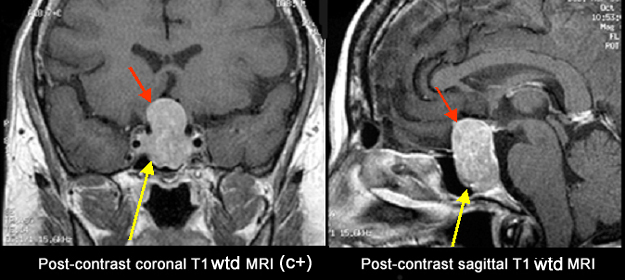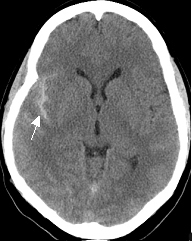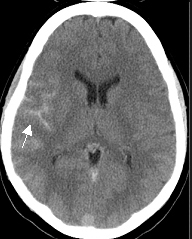Headache
Q1: List common clinical conditions where symptomatic headache is due to serious intracranial disease?
A brain scan may not be needed in a migraine patient with recurrent migraine. However, in this patient and others, increased headache severity or frequency, focal neurological findings or impaired consciousness require a brain scan, and preferably an MRI.
Case 1:
A 35 year old women comes to your office complaining of worsening peripheral vision over the past few months. She also complains of an associated headache that she cannot describe well. Her last menstrual period was 7 weeks ago. Neurological exam shows bitemporal hemianopsia. Her serum beta-HCG is normal.
- Are imaging procedures necessary for this patient? If so, what would you order?
- What is your diagnosis?

|
Pituitary Adenoma
Findings: A homogeneously enhancing tumor is seen within the sella (yellow arrow ) with suprasellar extension (red arrow) producing optic chiasm compression.
Microadenomas tend to be small in size and are recognized early due to the hormone secreting features. |
Case 2:
A 48-year-old male is rushed to the emergency department by his wife after the sudden onset of the “worst headache” of his life while he was home watching television. The patient began vomiting in the car en route to the hospital. ABCs were assessed and addressed in the ED, and the patient is stable.
- Are imaging procedures necessary for this patient? If so, what would you order?
- What is your diagnosis?
|
|
Diagnosis: Subarachnoid Hemorrhage
Subarachnoid blood is recognized by visualizing the high density of acute blood outlining the cerebral sulci and subarachnoid cisterns.
Subarachnoid Blood
Subarachnoid blood filling the right cerebral sulci (arrow), related to recent pituitary surgery.
|



